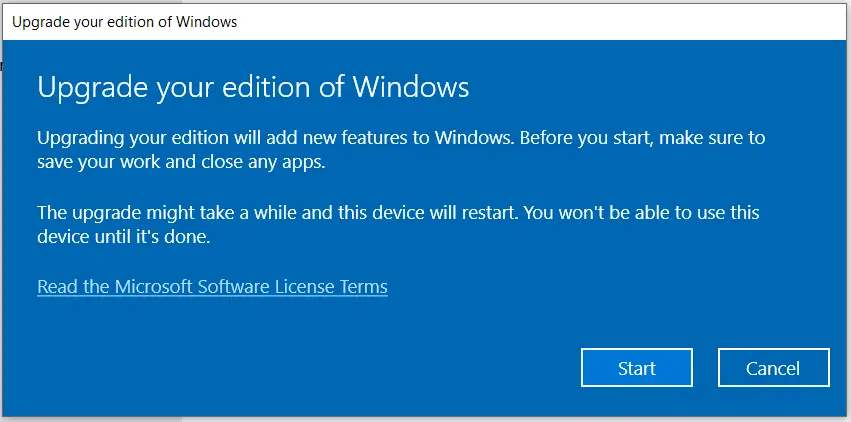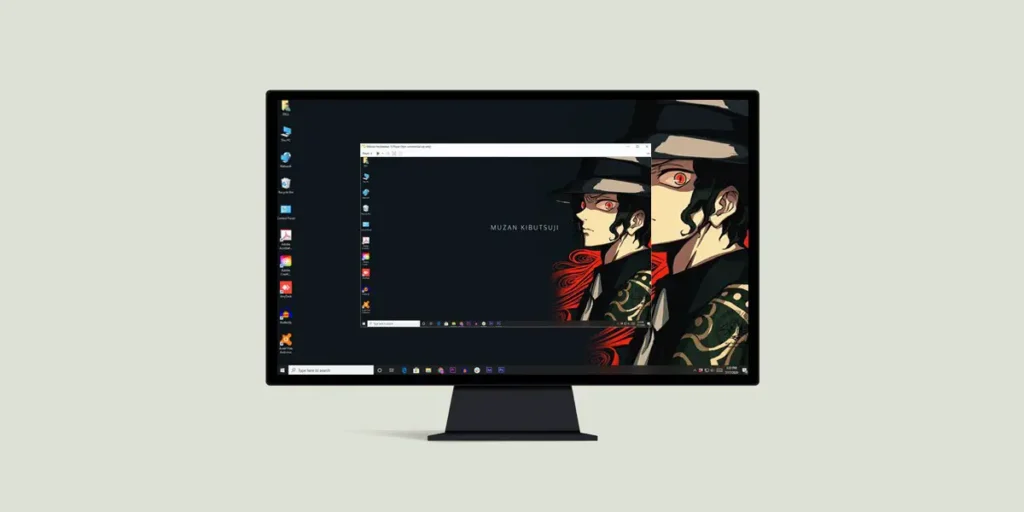ISO file is a popular file format which was previously used on CDs, DVDs or Blue-ray Disc. An ISO file is an archive file that contains an identical copy of a data on an optical disc; that is why ISO files are also known as ISO image. The generation of CDs and DVDs are long gone; people are often using a flash drive to transfer files. Several years back, installation files like antivirus, operating system, or games used to come in a DVD drive. But nowadays, we don’t find Disc drive on laptops, and hardly can we find them on desktops. Today, I am writing about how to burn ISO file on a USB flash drive using the Windows operating system.
The Internet has made this world a small place to live and find a product. We can literally find any product on the internet. That may be playing games online, watching movies, purchasing products that deliver the product at your doorstep, and programs used to come in disc drives. You need to download the ISO file of that program; then, burn it onto your flash drive and install it to another computer using it as a disc drive.
How to burn Windows 10 OS installer to a USB drive is the most asked question over the internet. Therefore I am taking the Windows ISO file as an example to burn it in a USB file. Following the same steps, you can burn any ISO file on a USB drive. When I have to burn ISO file on a USB drive, I use a command prompt, which I find comfortable working with. But most people might get confused with the command prompt. For this, there is a simple program called Rufus, which you can download and use it to burn ISO file on a USB Flash Drive. Here in this article, I will guide you with both the methods and follow what is comfortable for you.
How to Download Windows 10 ISO File
Windows 10 is the latest version of the operating system that was released on July 29, 2015. Unlike other versions of the operating system, Microsoft has made a legitimate copy of Windows 10 available for download directly from Microsoft’s website. You can either download ISO file on your computer; or prepare your flash drive with Windows installation file, or burn the Windows 10 installation file on a Disc drive, or you can even upgrade your system.
To download Windows 10 ISO file, open up Microsoft’s official website and go to Windows 10 Downloading page. Follow the step below download the ISO image file, and get ready to burn the ISO file on a USB Flash Drive.
- Visit the Microsoft Windows 10 download page.
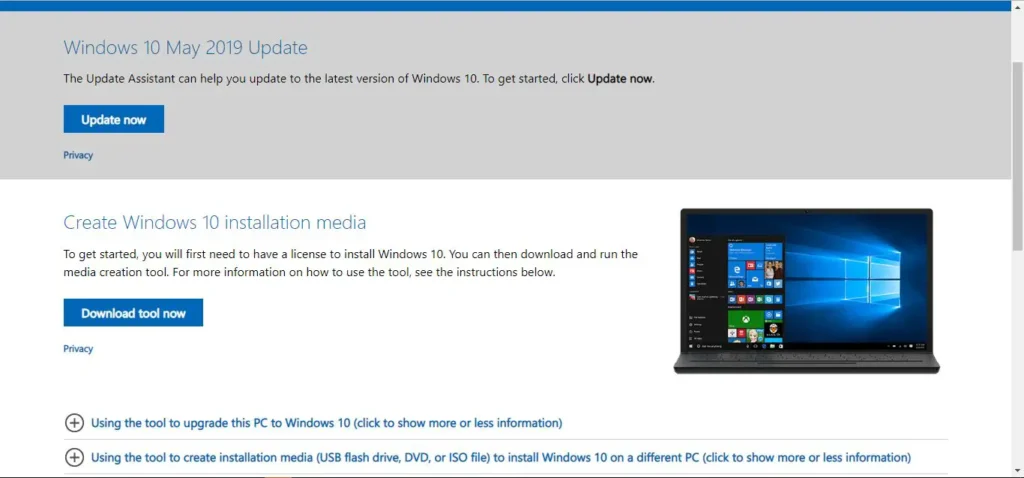
- You will see an action button with the label “Download tool now” under Create Windows 10 installation media, click the button to download. The download tool is now a tool used to download your Windows 10 file; this will not download the installation file.
- Now, open up the file you have just downloaded; this will open up the windows 10 setup wizard or windows.
- You will not have any trouble going to the setup wizard as you need to accept the privacy policy and click on the Next button. It will require a certain time to get the setup ready for you.
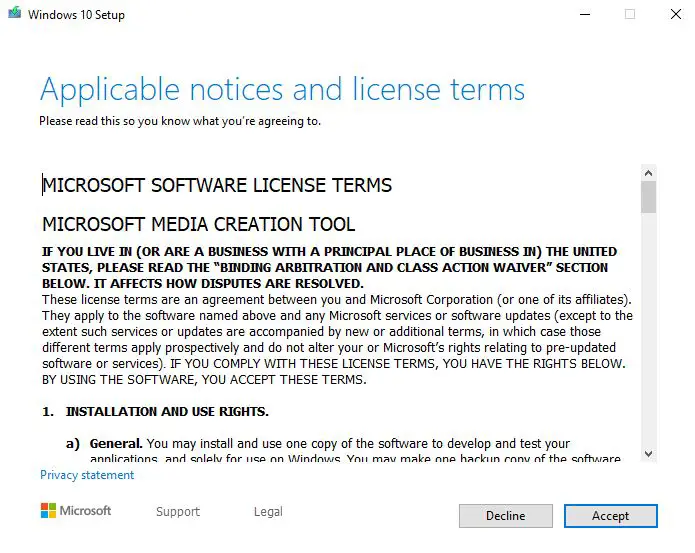
- You will get two options first one “Upgrade this PC now” and “Create Installation Media (USB flash drive, DVD, or ISO file) for another PC.” Click on the “Create installation media” radio button as this will help you download the ISO file to your device and click the next button. This will start downloading your Windows 10 installation file.
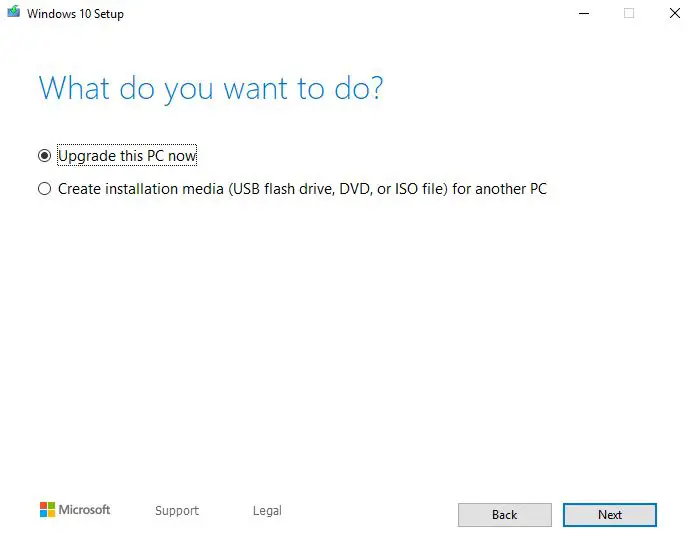
- After Downloading completes, “Applicable notices and license terms” open up and click on the Accept button.
Burning ISO file on a USB Drive
Here I will be explaining two different ways you can choose to burn ISO file on a USB Flash Drive. The first method is by using Windows feature, command prompt. Command Prompt is a command-line interpreter application available in most of the Windows operating systems. And the second method is by using a software “Rufus.” Rufus is a user-friendly application that requires you to download on to your system. However, these methods are only useful when you don’t have your burned USB flash drive beforehand; or you will burn another ISO file on a USB Flash Drive. In burning Windows 10, the Windows 10 Setup wizard will do the burning work for you without having you to download Rufus or use the command prompt.
Method 1: How to Burn ISO file on a USB Flash Drive Using Command Prompt
- Insert your USB flash drive that you want to burn ISO file on. [Note: Make sure your USB flash drive has enough space to copy the ISO image file],
- Run Command Prompt as Administrator. Got to run (Windows + R) and type cmd and click the Ok button.
- Type diskpart in the command prompt windows and hit Enter; this will launch Diskpart inside the command prompt interface.
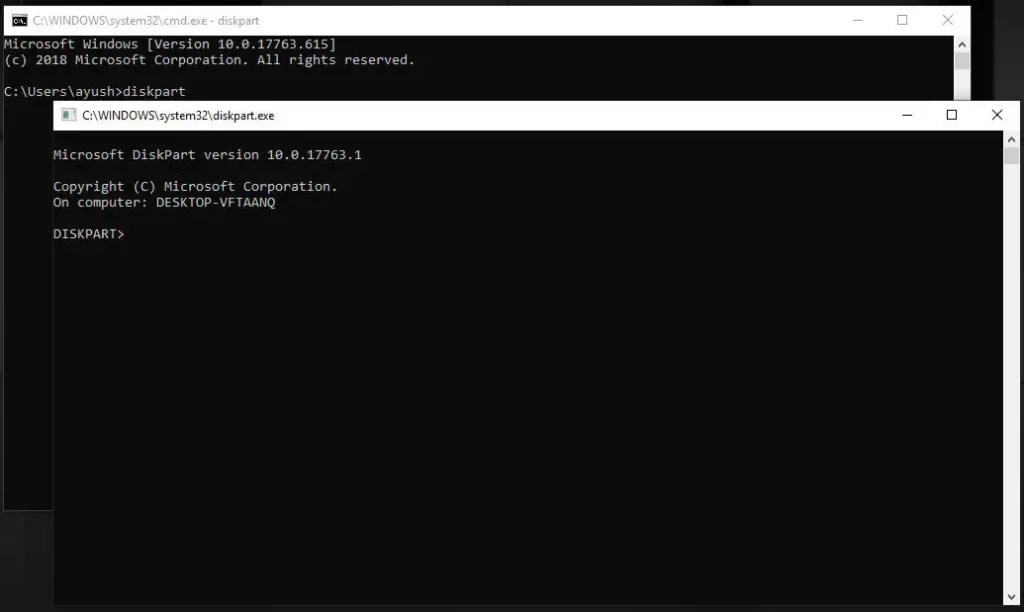
- Once the diskpart program launches, type list disk and hit enter. List Disk will list all the active storage devices connected to your computer. This will list your hard drive partition, USB flash drive, and other storage devices if connected.
- Most of the time, Disk 0 will be your primary partition, that is your hard drive. Go through the list and find your USB flash drive. In my case Disk, 1 is my USB flash drive. To avoid confusion, always insert the only flash drive you want to burn the ISO file.
- In my case, I will select Disk 1, so I will type select Disk 1 because disk 1 is my USB flash drive. Replace 1 with the correct number for you “select Disk X” and Hit Enter. The disk you select will be the disk that diskpart controls in the next few steps. If everything you are doing is right, diskpart will render “Disk 1 is now the selected disk”.
- Before you Burn ISO file on a USB flash drive, you need to format the drive to make your USB flash drive bootable.
Type clear and hit Enter. This will erase all data on your flash drive, so keep your flash drive back up if there are any important files on it. - After cleaning the drive, diskpart will render the successful message “Diskpart succeeded in cleaning the disk.” Now type create partition primary and press Enter. This is because once you clean the drive, the system recognizes the flash drive as unallocated space. Creating partition primary means that you will create a partition using the space where you will be going to burn the ISO file on.
- By default, diskpart will recognize the partition as partition 1. If you are confused, type list disk and hit enter; this will render disks and sizes and compare it with the listing you did in step 4.
Now, type select partition 1 to keep on working on it. - Type active and hit Enter to activate the partition 1. This will render a successful message of activating the partition.
- Now, you will have to format the drive in NTFS format. Yes, we erased everything on the disk typing clear. However, this is different, and in this step, we are defining the partition type as NTFS.
- So, type format fs=ntfs quick and press Enter. This will take a while to complete.
- After formatting the drive is completed, type exit to leave the diskpart and exit your command prompt windows.
Now, your USB flash drive is formatted and ready for making it a bootable flash drive. You need to copy the installation files to the flash drive. - Using the command prompt in this method, we can copy the installation files to the flash drive using CMD. The code for copying the file is “copy source destination /O /X /E /H /K.”
This might confuse you but there another simple option for you; go to the folder where you downloaded the ISO file. Now, right-click the ISO image and click Windows Explorer form the Open with option. This will open the files inside the ISO image file.
Now, please select all the files and copy it to your flash drive. - You have successfully burn ISO file on a USB flash drive. Just inject the flash drive and use it on the computer where you want to use it.
Method 2: How to Burn ISO file on a USB Flash Drive Using Rufus
- Download Rufus, Rufus, is a free tool that will correctly burn ISO file on a USB drive automatically. Make sure that you download Rufus 3.4 Portable from their site.
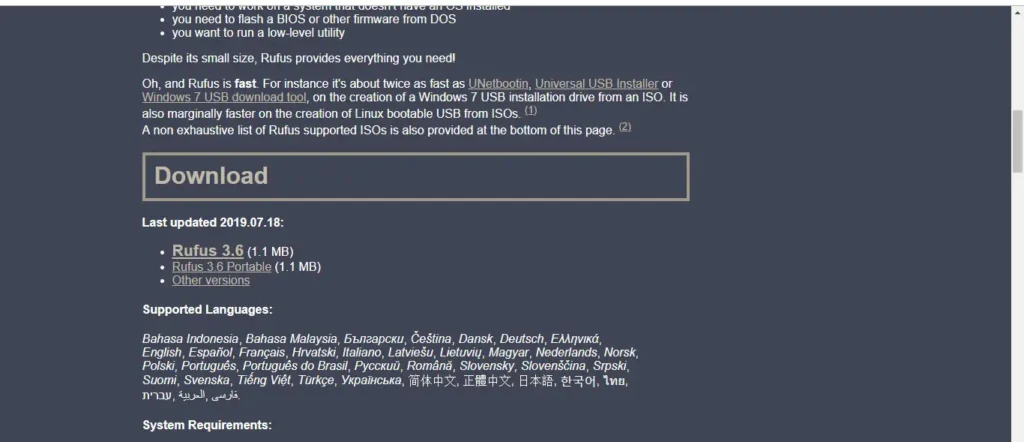
- Now open the downloaded file that you just downloaded. Rufus is a portable program. You don’t need to install the file on your computer, meaning that it just runs as-is.
- Now connect your flash drive on your computer that you want to ISO file to.
Rufus will erase all the files on your drive, so make sure you keep the data backup.
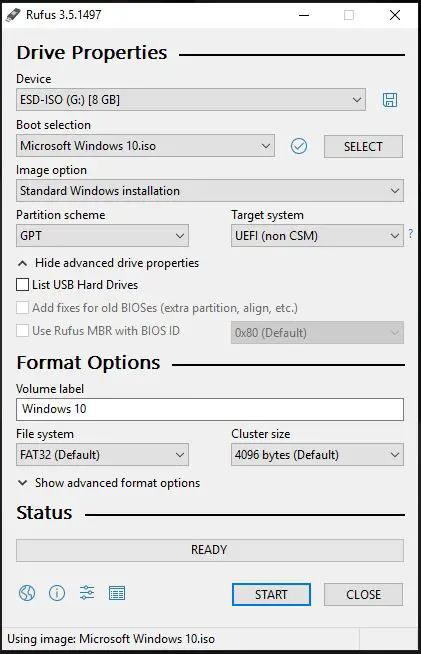
- After the Rufus program opens, select your flash drive from the Device drop-down menu, you want to burn the ISO file.
- Form the Boot selection drop-down menu, click on the SELECT button to choose the ISO file that you want to burn in your flash drive. This will open a browsing wizard (Open window) to choose the ISO image file. Select the ISO image fine and click Open. Or you can drag and drop the ISO file to the Rufus menu.
- Once the ISO file loads in the application, under the Image option area, click Standard Windows Installation if you see any. If not, continue to the next step.
- In the Format Option, if you want to change the flash drive’s name, you can do it by changing the name on the Volume label.
- Tap or click the START button to burn the ISO file on a USB flash drive. It will take several minutes to complete the burning process, which you can see in the progress bar in Status. Right after you click on the start button, a warning message pops up. “WARNING: ALL DATA ON DEVICE ’XYZ’ WILL BE DESTROYED.”
Click the OK button. - After burning completes, the status bar displays the READY message. You can now remove the flash drive and use it to boot into the computer where you want to use the installation file.


